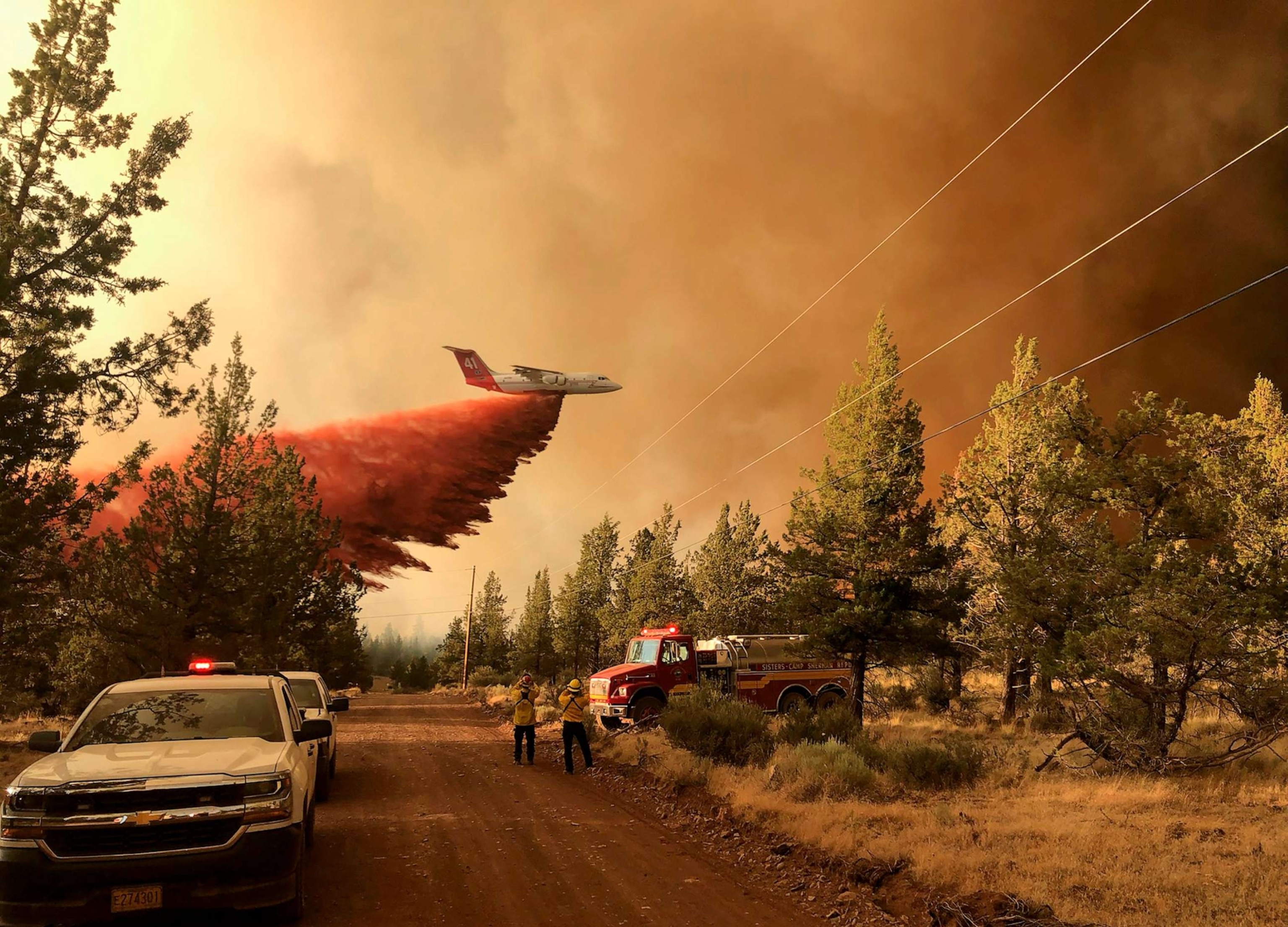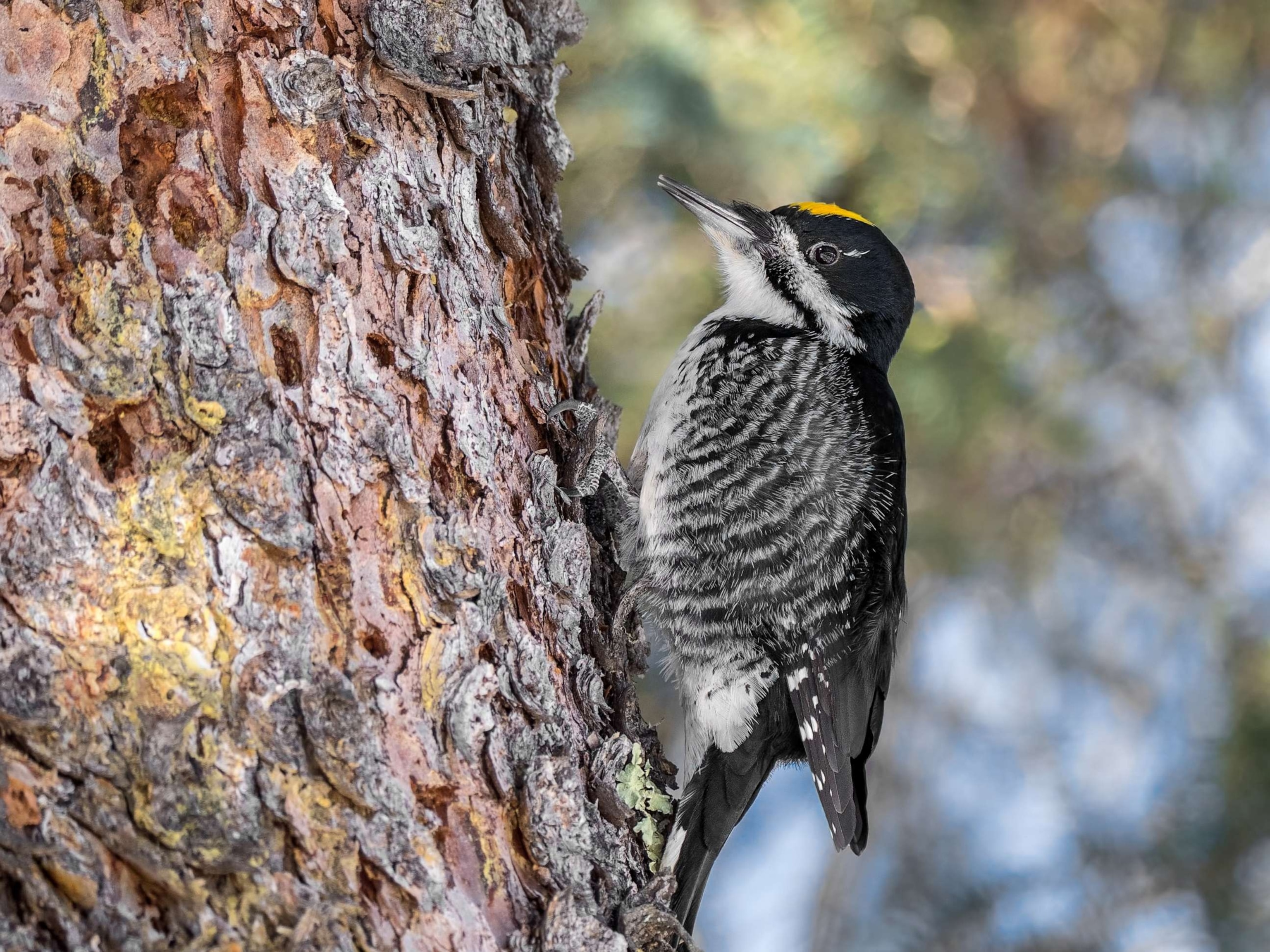How woodpeckers can be used to aid in wildfire recovery
Pyrodiversity involves the interactions of fire, biodiversity and ecosystem.
It turns out that woodpeckers are useful for more than using their beaks like jackhammers.
The habitat preferences of black-backed woodpeckers have led scientists to create a tool that can help forest managers promote regrowth and biodiversity following wildfires, according to a study published last week in the scientific journal Ecological Applications.
Black-backed woodpeckers "love pyrodiversity," or variation in the way that fires burn, which results in uneven patches burned at high, medium, and low severity, Andrew Stillman, a postdoctoral researcher of ecology and conservation at the Cornell Lab of Ornithology and author of the study, told ABC News.
The species are "highly associated" with the parts of severe wildfire burns that kill all the trees, Stillman said. As the trees die, woodboring beetles colonize them, providing ample food for black-backed woodpeckers and creating cavities in trees for other species of nesting birds, such as blue birds and chickadees, Stillman said.

Since it can require multiple years of surveys of fire-burned areas to find out where they are, scientists created a tool to predict where the woodpeckers are within months of the fire burning by using satellite derived data products combined with 11 years of surveys to predict where woodpeckers could be found in the greatest numbers. Pyrodiversity can then be assessed based on how much forest canopy has been lost, according to the paper.
Other datasets integrated into the tool include woodpecker home ranges, vegetation type, latitude, longitude, elevation and years since the last fire.
Fire management agencies can then use that data to determine whether to salvage log some areas and protect others, Stillman said. While the tool is currently set up for California, it can also be implemented for other regions, species and is hosted by The Institute for Bird Populations in partnership with the USDA Forest Service.
"Often very quickly after the fire burns is where the most important places for wildlife are," he said. "A tool exists that allows you to get a good baseline understanding for which areas need to be protected right away, and that helps you make more informed decisions about where you're going to implement different management techniques."

Researchers also put radio transmitters that weigh less than a paperclip on both adult and baby birds, or juvenile and fledgling birds, to act as a "secret window into the birds movements" and how they interact with burned forests.
While black-backed woodpeckers typically only exist in severely burned forests as adults, they discovered that they tend to nest in "edge habitats," or the regions edges between high severity and low severity. Additionally, that once hatched, the baby birds gravitated toward the live green trees that survived the burn after leaving the next, despite the smorgasbord of food that exists in the severely burned areas.
"It turns out that the fledgling birds need the live trees to hide from predators," Stillman said.
The more variation in in fire characteristics, the more beneficial it is for birds, wildlife and biodiversity as a whole, especially for black-backed woodpeckers, according to the study.
“A burned forest is a unique, incredible and complicated ecosystem that bursts with new life,” Stillman said. “At first you think everything is dead. The ground is ash. The trees are black. But as you start walking around, you find that the place is alive. It’s not dead, just changed.”

However, due to climate change, severe fires with longer burn seasons are becoming the norm -- especially in places like the Western U.S., which is suffering from a decades-long megadrought.
"We see fires that are bigger and more severe than they have been historically. And this creates conditions that many wildlife species haven't adapted to," Stillman said.




